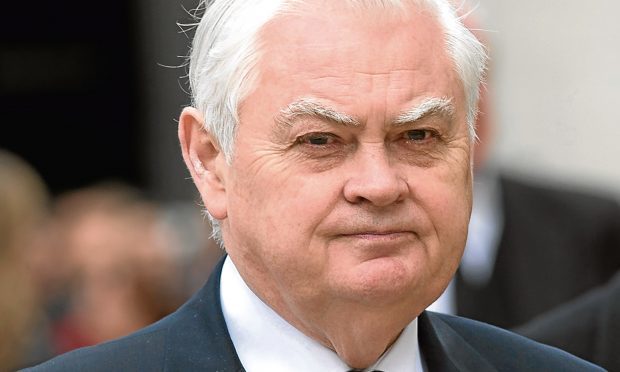A neat way to describe Theresa May’s government is “in office but not in power”. The phrase was coined by the waspish Norman Lamont to describe a Tory government that was pulled this away and that, with no sense of leadership or direction.
Mr Lamont was speaking after he had been fired by John Major as Chancellor of the Exchequer following Britain’s catastrophic falling out of the European Exchange Rate Mechanism (ERM) in 1992 – a day subsequently known as Black Monday.
Most days for the May administration look pretty black but this Monday was dark indeed. The UK’s plan to solve the Irish border question was scuppered by the DUP, thus ending Mrs May’s talks with the EU without agreement and so making the London government look comically “not in power”.
There is still time for the UK to fix the puzzle that is the border question – but no sign they have any better ideas. Jeremy Corbyn called Mrs May’s cabinet a “shambles” at Prime Minister’s Questions, and few could disagree. But Mr Corbyn didn’t give the impression he was about to grasp both office and power. Similarly, the SNP’s Ian Blackford used the Lamont quote but he too seemed reluctant to follow through and call for the PM to stand down. A statement issued later said Mr Blackford was only looking for the UK to stay in the single market and customs union.
The two main opposition parties in Westminster are enjoying the show of Tory incompetence but neither is eager to bring Mrs May’s time in office to a humane end. This is because neither Labour nor the SNP have worked out where they stand. For the Scottish Government, this is a major dilemma.
There is every chance there will be a snap election. The only thing holding a snap vote off is the Tories own dilemma over who to lead the party.
The SNP went into the 2017 election with a bad policy. The party tied Brexit to independence and called for Indyref2 and lost 21 seats in the process. Come an election, they will need something more solid.
Should Mrs May’s House of Cards fall, the public will want more than just ‘me too’ demands from the SNP. There will be demands Scotland either gains an opt-out, based on a democratic mandate, or for the entire Brexit process to be stopped. If the SNP go into a vote talking down independence but saying they can’t stop Brexit, when the UK is engulfed in a political crisis, they will look weak.
If the SNP says no to Brexit, it fears losing more support among those Nats who want out of everything. If the party raises the spectre of Indyref2, it worries about losing support to Labour. This is a dilemma born of a bad election result, but still being the most popular party by around 10 points in any poll, and with support for Indy in the high 40s.
The way out is to declare there needs to be an election. That is what Norman Lamont meant and that is the logical inference of Ian Blackford’s use of the phrase. He and others need the courage of that conviction – to call a stop to the shambles. Thus far political parties have backed off another vote, fearing voter fatigue. Circumstances have sufficiently changed to make a vote essential to good governance. At the moment no one is getting what they want. Neither Remainers or Leavers are being satisfied by the Brexit mess.
The next step is to put back the Brexit deadline by demanding a long transition period. The drama of tough negotiation against the clock is making the UK panic, and that’s never good.
In the event of a general election, the SNP should stand on the platform of continued membership of the single market and customs union for Scotland, no matter what the rest of the UK decides. Its current position – of calling for the whole of the UK to stay in the single market and customs union – is too easily brushed aside by votes of England. Scotland needs to take a more distinct stance with a clear result.
There is no precedent for a general election mandate overruling an advisory referendum, but these are unusual times. In the event of a general election where Scotland voted to stay in the single market and customs union, it would be near-impossible for Westminster to ignore, no matter who formed the next UK Government. The SNP is in office but not sure what to do with its power – it needs to make its mind up soon, and be bold in its ambition.
